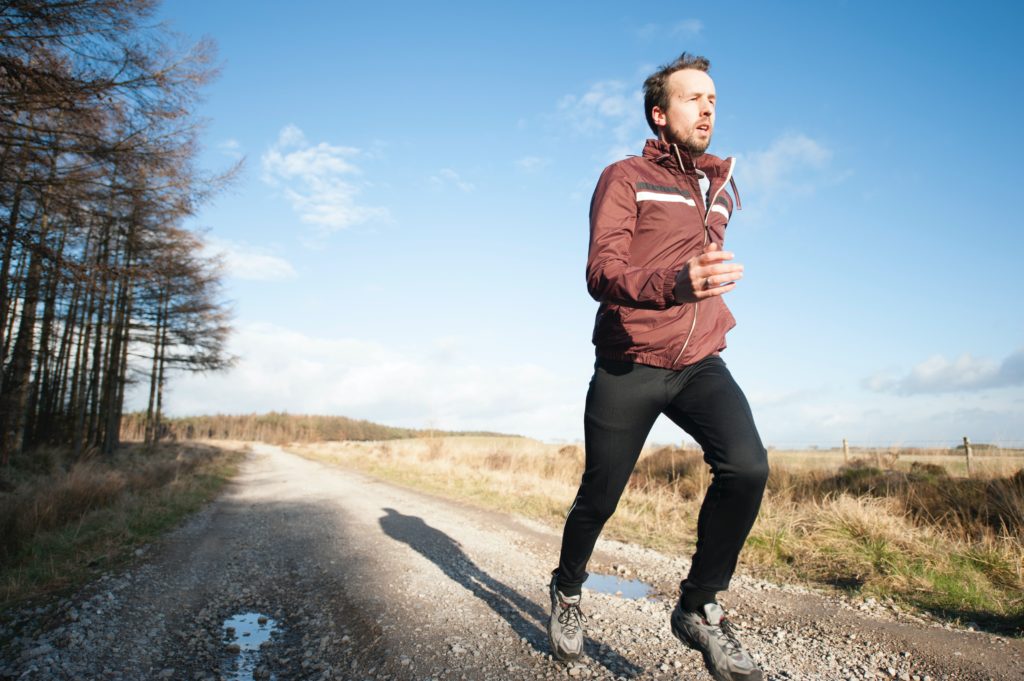
Pre-pandemic we saw increased popularity of local races such as the Steamtown Marathon and Scranton 1/2 Marathon. With that, local interest in running was exploding and will hopefully return to normal soon. However, during the pandemic, especially when fitness centers were closed, many took seasoned and beginner runners to the streets to improve fitness and alleviate stress. However, as a health care provider, I am seeing a significant number of first time runners visit my office with a wide variety of injuries that are very preventable with a modicum of good judgment.
Runners are addicted to running for good reason. There is nothing like it! No exercise offers so much in such little time. Caloric expenditure is higher than in most other exercises, including biking. Running also allows for fresh air, beautiful scenery, minimal investment in clothing or equipment, little skill and time to learn. Moreover, the benefits are many; runners suffer from less depression, colds and flu symptoms, and experience less pain due to an endorphin release (a natural chemical in the brain associated with euphoria and pain control.)
This column will be dedicated to those who are interested in beginning a running program for all the reasons mentioned above and more. The program is designed to promote a safe and gradual introduction or return to running as form of exercise. The initial goal is to help you attain 30 minutes (approximately 2 miles) of running at a slow, relaxed and safe pace. This 30 minute goal is the standard used in most research that shows improvement in weight control, cholesterol, heart disease, blood pressure and adult onset diabetes. The 8 week program is a simple and safe program that begins with more walking than running and gradually reverses the proportion. The first two miles are the hardest and once mastered; one can begin to build on mileage and intensity if desired. For those interested in advancing to a half or full marathon, I recommend the book “The Marathon” by Jeff Galloway who advocates a run/walk program as you increase distances. Visit his website at: www.jeffgalloway.com.
The appearance of an arch in a weight bearing position does not automatically exclude the individual from excessive supination or pronation. Consult a podiatrist or an orthopedic physical therapist to determine the propensity toward supination, pronation or neutrality of the foot and ankle.
Note: New Balance, Brooks, Asics, Mizuno & Saucony all make quality running shoes to accommodate a supinated, pronated or normal foot.
Mon.Wed.Fri.Sat: Run 1 minute. Walk 2 minutes. Repeat 10 Times
Tues.Thurs: Walk 30 minutes
Sun: Rest
Mon.Wed: Run 2 minutes. Walk 1 minute. Repeat 10 Times
Fri.Sat: Run 3-4 minutes. Walk 1 minute. Repeat 6-7 Times
Tues.Thurs: Walk 30 minutes
Sun: Rest
Mon.Wed: Run 5 minutes. Walk 1 minute. Repeat 5 Times
Fri.Sat: Run 6 minutes. Walk 1 minute. Repeat 4 Times
Tues.Thurs: Walk 30 minutes
Sun: Rest
Mon.Wed: Run 8 minutes. Walk 1 minute. Repeat 3 Times THEN: Run 3 minutes
Fri.Sat: Run 10 minutes. Walk 1 minute. Repeat 2 Times THEN: Run 8 minutes
Tues.Thurs: Walk 30 minutes
Sun Rest
Mon.Wed: Run 12-13 minutes. Walk 1 minute. Repeat 2 Times THEN: Run 2-4 minutes
Fri.Sat: Run 14-15 minutes. Walk 1 minute. Repeat 2 Times THEN: Run 2 minutes
Tues.Thurs: Walk 30 minutes
Sun: Rest
Mon.Wed: Run 16-17 minutes. Walk 1 minute. THEN: Run 12-13 minutes
Fri.Sat: Run 18-19 minutes. Walk 1 minute. THEN: Run 10-11 minutes
Tues.Thurs: Walk 30 minutes
Sun: Rest
Mon.Tues.Wed: Run 20-22 minutes. Walk 1 minute. THEN: Run 7-9 minutes
Fri.Sat: Run 24-26 minutes. Walk 1 minute. THEN: Run 3-5 minutes
Thurs: Walk 30 minutes
Sun: Rest
Mon.Tues.Wed: Run 27-28 minutes. Walk 1 minute. THEN: Run 1-2 minutes
Fri.Sat: Run 29-30 minutes. Walk 1 minute. THEN: Run 0-1 minutes
Thurs: Walk 30 minutes
Sun: Rest
SOURCE: Runner’s World

NEXT MONDAY – Read Dr. Paul J. Mackarey “Health & Exercise Forum!” NEXT WEEK…RUN WITH GOOD FORM!
This article is not intended as a substitute for medical treatment. If you have questions related to your medical condition, please contact your family physician. For further inquires related to this topic email: drpmackarey@msn.com
Paul J. Mackarey PT, DHSc, OCS is a Doctor in Health Sciences specializing in orthopaedic and sports physical therapy. Dr. Mackarey is in private practice and is an associate professor of clinical medicine at GCSOM.